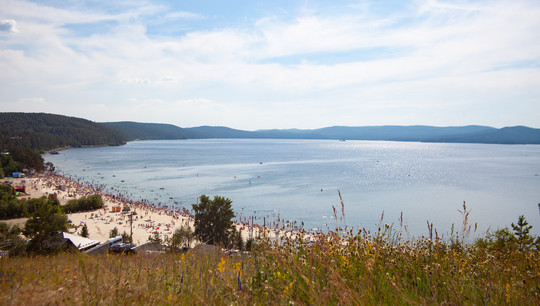Ural Federal University’s Innovative Approach Enhances Miass Tourism and Development
Konstantin Bugrov, professor of the Department of Russian History at the UrFU, a leading researcher at the Institute of History and Archaeology of the Ural Branch of the Russian Academy of Sciences, and a specialist in the project “Creative Reindustrialization of Second-tier Cities in the Conditions of Digital Transformation”, believes that the symbolic capital of Miass accumulated over decades can help the city’s economic growth. In the journal Questio Rossica, the expert explains the directions in which the city can develop and the historical conditions that have developed for this.
According to Konstantin Bugrov, Miass developed in the 20th century as a result of a kind of “historical luck”: the industrial growth of the city was determined by the Trans-Siberian Railway passing through Miass, the “overflow” of heavy industry from the mountainous regions of neighboring Zlatoust, and the evacuation of enterprises during the Great Patriotic War. At the same time, since the end of the XIX century, Miass has had a reputation as an impeccably beautiful place – the Golden Valley. Miass Lake Turgoyak became known as the “Pearl of the Urals”, having taken this title from Lake Uvildy. It was the natural beauty of Miass and the proximity of the lake that became the decisive factors for academician Viktor Makeyev in choosing the place for the development of science-intensive defense production – today it is the Makeyev Rocket Design Bureau.
“The symbolic capital of Miass accumulated over decades is perhaps the most valuable resource available to the local community today. Marked as natural beauties thanks to decades of work of journalists, publicists, and photographers, mountain slopes, lake shores, and panoramic views are as much products of the city as, for example, Ural cars”, explains Konstantin Bugrov.
To implement the changes, it is necessary to take risks and invest in the development of the city, instead of hoping for a new “historical fortune,” the expert believes. After all, if in the industrial era, economic growth was followed by infrastructure development, today the order has changed: first, it is necessary to invest in infrastructure development, then economic growth will follow.
Taking into account the accumulated symbolic capital, the expert suggests two options for the development of the city’s economy. The first is to turn Miass into a “mini-Sochi” by attracting tourists from larger cities. As the expert recalls, the concept of development of the Miass district, adopted in 2021, emphasizes the creation of the most favorable conditions for the development of the tourism industry – the creators of the concept expect the flow of tourists to increase from 300 to 600 thousand people per year by 2035. This, in turn, will require the strengthening of recreational infrastructure, which will allow to maximize the stay of visitors in the city and provide them with maximum services.
The second scenario is that of development through development. In a way, this scenario repeats the strategy of Academician Makeyev, who hoped to use the natural beauty of Miass to create a creative atmosphere for employees of science-intensive production. It assumes the growth of the city’s economy through development, i.e. the construction of new housing and the creation of demand for highly qualified workers.
“Imagine, for example, information technology specialists who would like to move from the megalopolis to a beautiful place with a rich history, clean air, and at the same time not too far from the megalopolis… This idea is not new: already in 2019, Miass entrepreneur Oleg Sirotin proposed the idea of an “open city” for 15,000 residents west of the historic center of Miass in the valley of the Atlyan River. The history of Miass supports this approach. Of all the “second tier” cities in the Urals, Miass is in the best position for this”, notes Konstantin Bugrov.

